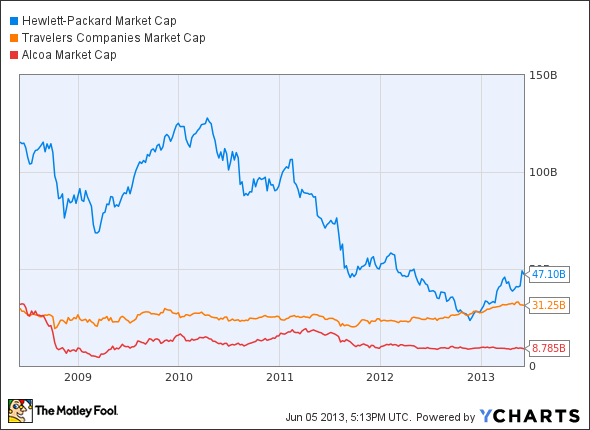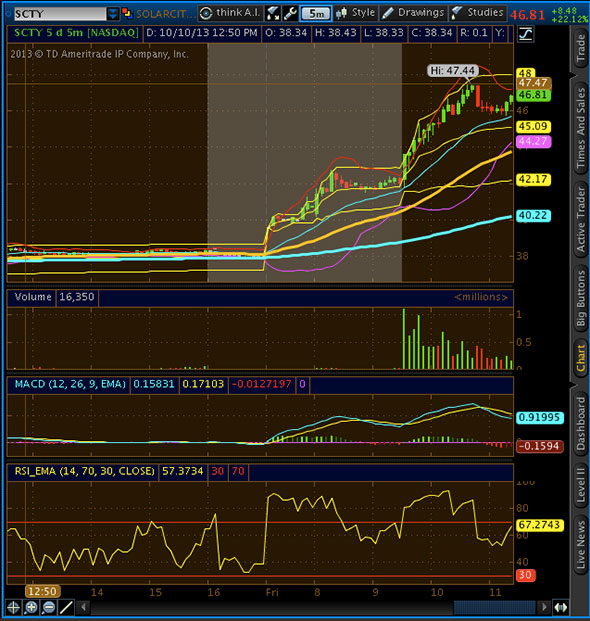Although business headlines still tout earnings numbers, many investors have moved past net earnings as a measure of a company's economic output. That's because earnings are very often less trustworthy than cash flow, since earnings are more open to manipulation based on dubious judgment calls.
Earnings' unreliability is one of the reasons Foolish investors often flip straight past the income statement to check the cash flow statement. In general, by taking a close look at the cash moving in and out of the business, you can better understand whether the last batch of earnings brought money into the company, or merely disguised a cash gusher with a pretty headline.
Calling all cash flows
When you are trying to buy the market's best stocks, it's worth checking up on your companies' free cash flow once a quarter or so, to see whether it bears any relationship to the net income in the headlines. That's what we do with this series. Today, we're checking in on China Lodging Group (Nasdaq: HTHT ) , whose recent revenue and earnings are plotted below.

Source: S&P Capital IQ. Data is current as of last fully reported fiscal quarter. Dollar values in millions. FCF = free cash flow. FY = fiscal year. TTM = trailing 12 months.
Over the past 12 months, China Lodging Group burned $65.8 million cash while it booked net income of $29.7 million. That means it burned through all its revenue and more. That doesn't sound so great. FCF is less than net income. Ideally, we'd like to see the opposite.
All cash is not equal
Unfortunately, the cash flow statement isn't immune from nonsense, either. That's why it pays to take a close look at the components of cash flow from operations, to make sure that the cash flows are of high quality. What does that mean? To me, it means they need to be real and replicable in the upcoming quarters, rather than being offset by continual cash outflows that don't appear on the income statement (such as major capital expenditures).
For instance, cash flow based on cash net income and adjustments for non-cash income-statement expenses (like depreciation) is generally favorable. An increase in cash flow based on stiffing your suppliers (by increasing accounts payable for the short term) or shortchanging Uncle Sam on taxes will come back to bite investors later. The same goes for decreasing accounts receivable; this is good to see, but it's ordinary in recessionary times, and you can only increase collections so much. Finally, adding stock-based compensation expense back to cash flows is questionable when a company hands out a lot of equity to employees and uses cash in later periods to buy back those shares.
So how does the cash flow at China Lodging Group look? Take a peek at the chart below, which flags questionable cash flow sources with a red bar.

Source: S&P Capital IQ. Data is current as of last fully reported fiscal quarter. Dollar values in millions. TTM = trailing 12 months.
When I say "questionable cash flow sources," I mean items such as changes in taxes payable, tax benefits from stock options, and asset sales, among others. That's not to say that companies booking these as sources of cash flow are weak, or are engaging in any sort of wrongdoing, or that everything that comes up questionable in my graph is automatically bad news. But whenever a company is getting more than, say, 10% of its cash from operations from these dubious sources, investors ought to make sure to refer to the filings and dig in.
With 26.2% of operating cash flow coming from questionable sources, China Lodging Group investors should take a closer look at the underlying numbers. Within the questionable cash flow figure plotted in the TTM period above, other operating activities (which can include deferred income taxes, pension charges, and other one-off items) provided the biggest boost, at 22.0% of cash flow from operations. Overall, the biggest drag on FCF came from capital expenditures. China Lodging Group investors may also want to keep an eye on accounts receivable, because the TTM change is 4.5 times greater than the average swing over the past 5 fiscal years.
A Foolish final thought
Most investors don't keep tabs on their companies' cash flow. I think that's a mistake. If you take the time to read past the headlines and crack a filing now and then, you're in a much better position to spot potential trouble early. Better yet, you'll improve your odds of finding the underappreciated home-run stocks that provide the market's best returns.
Looking for alternatives to China Lodging Group? It takes more than great companies to build a fortune for the future. Learn the basic financial habits of millionaires next door and get focused stock ideas in our free report, "3 Stocks That Will Help You Retire Rich." Click here for instant access to this free report.
We can help you keep tabs on your companies with My Watchlist, our free, personalized stock tracking service.
Add China Lodging Group to My Watchlist.


 David Ryder/Bloomberg via Getty Images WASHINGTON -- Average U.S. rates for fixed mortgages barely changed this week, hovering near historically low levels. Mortgage buyer Freddie Mac said Thursday that the average for the 30-year loan slipped to 4.51 percent from 4.53 percent last week. The average for the 15-year loan edged up to 3.56 percent from 3.55 percent. Mortgage rates have risen more than a full percentage point since hitting record lows a year ago. The increase was driven by speculation that the Federal Reserve would reduce its $85 billion a month in bond purchases. Last month, the Fed determined the economy was strong enough to start cutting those monthly purchases by $10 billion. The bond purchases have kept long-term interest rates low. The rise in mortgage rates has slowed home sales, which have fallen for three straight months. But overall, 2013 represented the best year for the housing market since the financial crisis. Sales of existing homes should reach 5.1 million for last year, the National Association of Realtors forecasts. That would be up 10 percent from the previous year and the most since 2006. It's still below the 5.5 million generally associated with healthy housing markets. Most economists expect sales and prices to keep rising this year, but at a slower pace. They forecast sales and prices will likely rise around 5 percent, down from double-digit gains in 2013.
David Ryder/Bloomberg via Getty Images WASHINGTON -- Average U.S. rates for fixed mortgages barely changed this week, hovering near historically low levels. Mortgage buyer Freddie Mac said Thursday that the average for the 30-year loan slipped to 4.51 percent from 4.53 percent last week. The average for the 15-year loan edged up to 3.56 percent from 3.55 percent. Mortgage rates have risen more than a full percentage point since hitting record lows a year ago. The increase was driven by speculation that the Federal Reserve would reduce its $85 billion a month in bond purchases. Last month, the Fed determined the economy was strong enough to start cutting those monthly purchases by $10 billion. The bond purchases have kept long-term interest rates low. The rise in mortgage rates has slowed home sales, which have fallen for three straight months. But overall, 2013 represented the best year for the housing market since the financial crisis. Sales of existing homes should reach 5.1 million for last year, the National Association of Realtors forecasts. That would be up 10 percent from the previous year and the most since 2006. It's still below the 5.5 million generally associated with healthy housing markets. Most economists expect sales and prices to keep rising this year, but at a slower pace. They forecast sales and prices will likely rise around 5 percent, down from double-digit gains in 2013.







